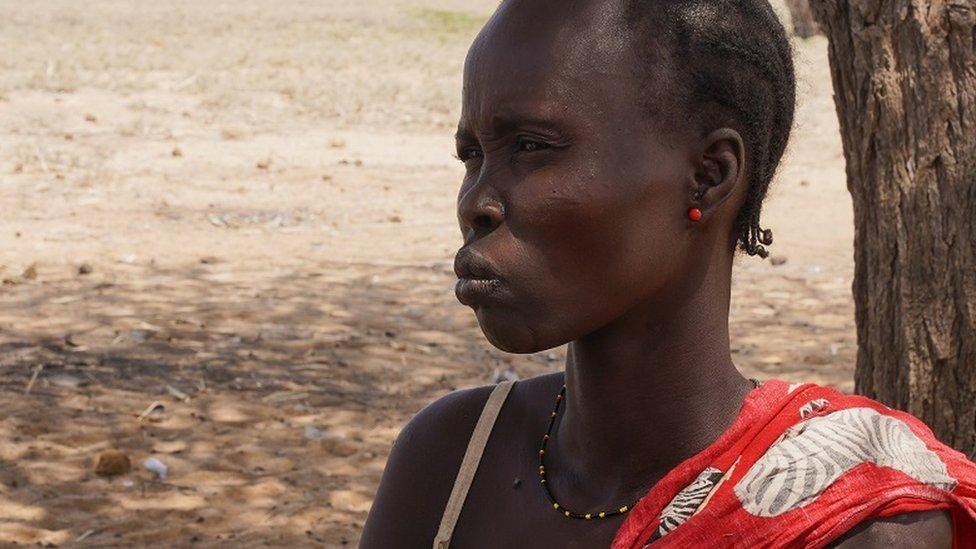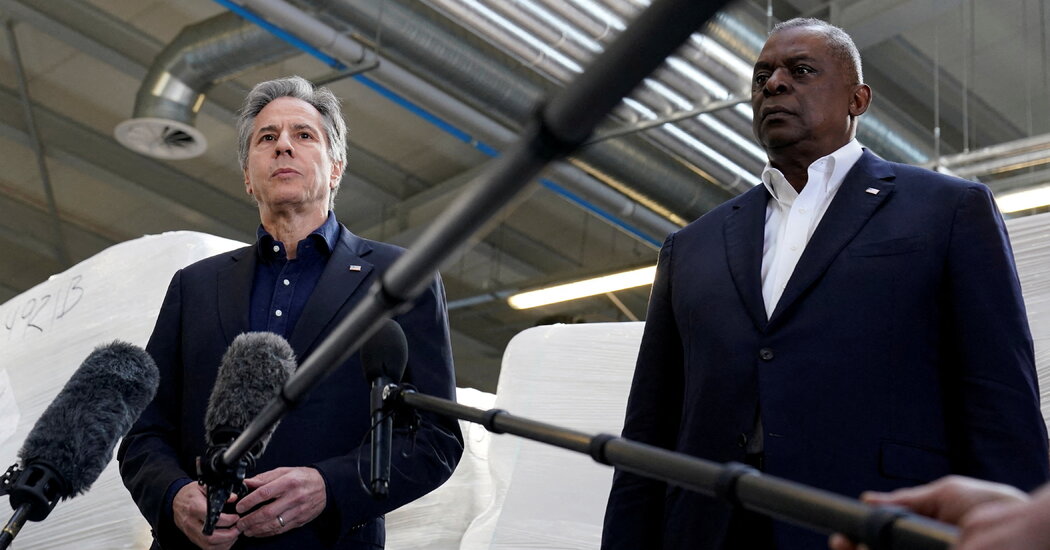
[ad_1]

In a desolate village in Turkana, Northern Kenya, villagers are praying for rain, but it just won’t come.
A fourth season of failed rains is causing one of the worst droughts East Africa has seen in decades, and this village, which is home to 3,600 families, is one of the areas hardest hit.
The land is dry, dusty and barren.
The remaining livestock eat the withered, gray shrubs which cover the land. The people eat whatever they can find, often not very much.
Jacinta Atabo Lomaluk lives in Lomoputh village.
She is a mother of five whose eldest son has been suffering from malnutrition since September. The 12-year-old is weak and cannot walk or even stand alone. She says she has never experienced conditions as bad as this drought before.
“It is worsening, worse than it has ever been. That’s why you can see signs of starvation here.”
‘Starvation has become our companion’
Since this latest drought started last year, there have been countless cases of malnutrition.
Ms Lomaluk says her family eats only one meal a day. As there is not enough food to go around, priority is given to the children and elderly.
“I wish there could be immediate aid to rescue the starving, especially the kids who are in danger,” she says. “Otherwise, we are expecting more people to die.”

Ms Lomaluk is just one of millions feeling the impact of the lack of rain.
At a community meeting, local woman Narogai Long says they have been starting to think their situation will not improve.
“There has not been any intervention in three years. We’re starting to believe starvation was meant for us,” she says. “It has become our companion.”
“There is no food. We, the mothers, have to sacrifice ourselves and give what we have to our children or elders,” she adds.
‘Twenty million people at risk’
Families have become desperate for food and water. Millions of children are malnourished. Livestock, which pastoralist families rely on for food and livelihoods, have died.
The drought stretches far beyond this small Kenyan village and the UN’s World Food Program says up to 20 million people in East Africa are at risk of severe hunger.
Ethiopia is battling the worst drought in almost half a century and in Somalia 40% of the population are at risk of starvation.

The causes of this international crisis are complex and show no sign of abating.
Climate change has been a chief concern.
According to the United Nations, Africa is the continent most vulnerable to the impacts of climate change. This is despite the fact it contributes only 4% of global carbon emissions.
On-going conflicts in Ethiopia and Somalia are further exacerbating the already precarious conditions.
Although far away, the conflict in Ukraine has also played a role, causing food prices to soar, increasing fears of hunger for communities who must buy food when they cannot grow their own.
Ukraine has also captured much of the world’s attention and resources. As a result, aid budgets are stretched and there is no telling when, or even if, enough assistance will come to East Africa.
‘The world is not looking this way’
It is a situation that the head of the UN’s humanitarian affairs office, Martin Griffiths, wants to change.
“I want to try hard to get the world to pay attention to the situation here,” he tells the BBC on a visit to drought-affected northern Kenya.
“The world’s attention is wholly focused on Ukraine, which is a terrible crisis, and I’ve been to both places, but the suffering I’ve seen here has no equal.”
While his visit did not bring immediate aid to the region, he still hopes to be able to bring some relief – if donors increase funding.
“At the United Nations, we have a program for the Horn of Africa, which includes Kenya, precisely for these needs,” he said. “Properly funded, they would get the help that they deserve, and it won’t take long.”

The inhabitants of Lomoputh village have resilience. What little food they have, they share among neighbors and are determined to protect their way of life.
Raising awareness of the plight of those here may bring global attention and aid, but as the drought drags on, the most vulnerable may not be able to wait much longer.
“Even if it rains, it won’t help. Even if aid comes it won’t help. We need a long-term plan,” Ms Lomaluk says, sheltering from the morning sun under a tree next to her home.
“Otherwise, you may come here in a few months, and no-one will be here. We will have all migrated from here.”

You may also be interested in:
[ad_2]
Source link

